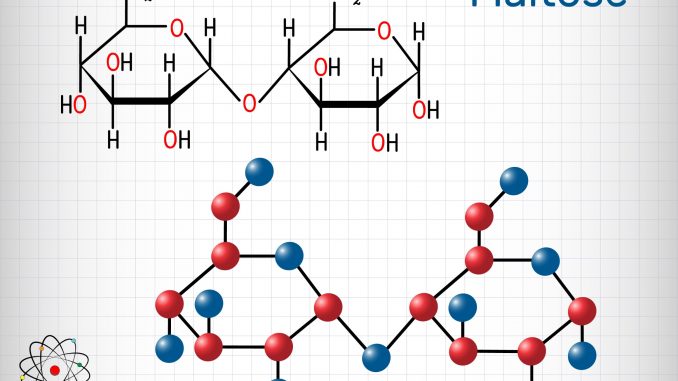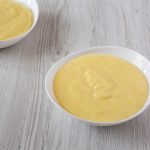
Whilst I was working on a small sauce project, I started seriously considering how maltose could be part of the formulation and why I might need it.
Maltose is one of a group of carbohydrate sources which also include glucose blends, high corn fructose syrups such as HFCS 42, HFCS 55 and HFCS 90. Not only is it a sweetener, it’s also a contributor to caramel colour. You find maltose in all sorts of products, chinese foods in particular, jams and spreads, confectionary and candies, sauces (of course) both sweet and savoury, desserts – the list is endless. Beverages, especially beers made in the traditional way rely on this sugar along with others as the fermentation medium for yeast growth. It also lends beer that characteristic warm aroma and flavour from this sugar. You will undoubtedly see it in whisky too.
Maltose is often sold as malt syrup or malt sugar. Other functional uses include its application as a glaze on particular foods such as savoury and meat dishes. I’m sure we’ve all tried Spare Ribs and Peking Duck which have this extraordinary glossy glaze and with it a characteristic flavour.
That flavour has often been described as slightly warming, of caramel, almost slight chocolate-like. It has a sticky texture which can be modified with heating.
Maltose is a disaccharide of two glucose units.
The manufacture of maltose is similar to that of glucose relying on immobilized enzyme technology for its creation. The substrates though are barley base and corn rice. It is often broken down using the enzyme maltase.
The use of maltose goes back in time to ancient cultures that used this sweetener for a variety of foods. The ancient Chinese and Egyptians understood its properties and it brought interest to their cuisine. the sugar was often added as a thickener too. It is best to use it in the syrup form. We normally make up a stock solution of varying strengths just to get the formulation right.
From a nutritional perspective, it is an alternative sweetener to sucrose and glucose particularly where diabetic foods need to be considered.
Alternatives
Maltose can be replaced in formulation using brown rice syrup or barley malt syrup which have a similar sweetness profiles. The other sweeteners are honey, corn syrup and even maple syrup.
Maltose is twice as sweet as corn syrup so to preserve a particular level of sweetness means using twice as much of the corn syrup. It will alter the formulation profile and impact other functional aspects but it is worth considering on cost. Some users add molasses and brown sugar to the corn syrup to reduce the overall amount of this ingredient used.
[Please note we are an affiliate marketing partner and will make a sales commission if you purchase any items through our affiliate links. Please read our affiliate disclosure]
Purchase your maltose and syrups here


Leave a Reply